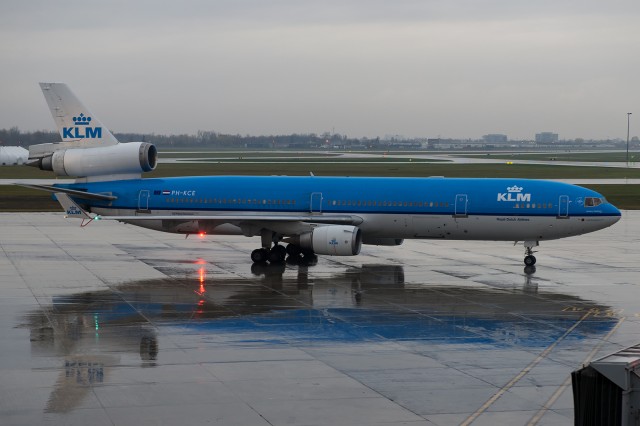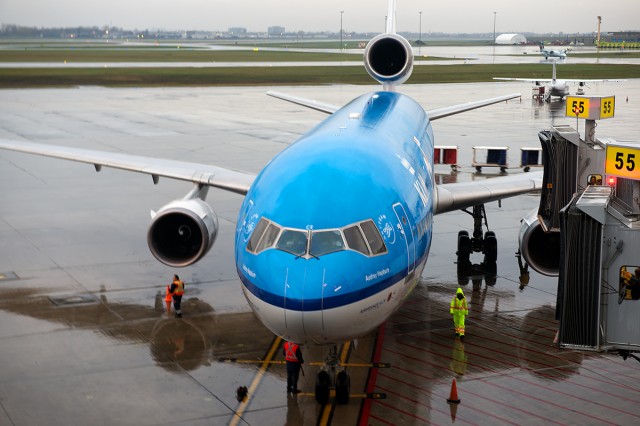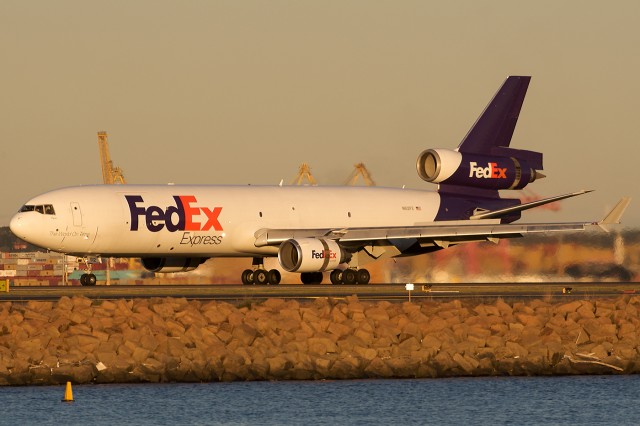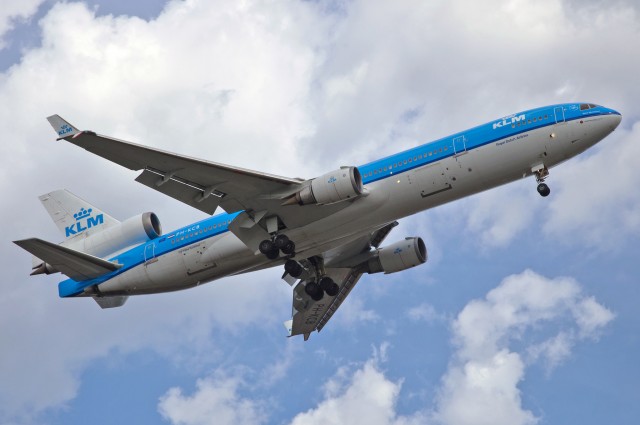
PH-KCE (Audrey Hepburn) arriving at gate A55 after a water cannon salute – Photo: Bernie Leighton | AirlineReporter
In October of 1934, KLM (Royal Dutch Airlines) took delivery of their first Douglas aircraft: a DC-2. This DC-2 was entered into an air race from London to Melbourne. It placed second. Not only did it place second, but it did so carrying a full passenger load. Fast forward to 1993. KLM took delivery of their last, now, McDonnell Douglas aircraft type – the MD-11. Unfortunately for us enthusiasts, October 25th (when KLM’s summer timetable ended) would not only mark the end of the MD-11, but the end of KLM’s eighty-year history of commercially operating McDonnell Douglas aircraft.
All of KLM’s MD-11s were named after women renown for their charitable or humanitarian efforts. The aircraft I was to fly on, PH-KCE, is named after Audrey Hepburn.
Naturally, I had to be a part of the final flight.

KLM’s last MD-11 to Montreal at the gate – Photo: Bernie Leighton | AirlineReporter
KLM and Aeroports Du Montreal were also very aware that this was the last MD-11 commercial passenger service, ever. They had prepared quite a party at the gate. There was an impressive stack of cupcakes; some bearing a chocolate saying “KLM 95” – along with a soft drinks bar and a photo booth to get your photo taken with an MD-11.
The MD-11 was probably a bad idea. McAir came up with the aircraft because it was a bigger, meaner, DC-10. So much DC-10 that there originally was not going to be an MD-11, but a DC-10 stretch. There were two attempts at this aircraft: a DC-10-10 stretched by 40 feet, and a DC-10-30 stretched by 30 feet. Concurrently, McDonnell Douglas (McAir) was concerned about the range of the 747-SP and began work on an ultra-long-range DC-10 Global.
This research lead to an aircraft series called the DC-10 Super 60. The DC-10 Super 60 was going to be a series. A simple stretch, an ultra-long-range variant, and an aircraft optimized for both range and capacity. Unfortunately for McDonnell Douglas, the American Airlines 191 crash happened – summarily executing the DC-10 program. It did not help that there was economic malaise going on at the time, either.

Many MD-11s have been converted to cargo duty. An example arriving at Kingsford-Smith Airport, Sydney. Photo – Bernie Leighton | AirlineReporter
Being the kings of iteration that they were, in 1981 they decided to revive the large trijet research. Leasing a DC-10-10 from Continental, they studied various winglet configurations in conjunction with NASA. For reasons of marketing, this project would be designated the MD-100. This was an interesting project as it actually offered more engine options than the final MD-11, in the form of the Rolls Royce RB.211. By November 1983, it was clear there was no interest in the MD-100. The board shuttered it.



